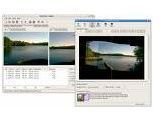Photo Manipulation Software Review: Hugin
When you first hear about Hugin it sounds like it should be some kind of stuffed and brightly colored children’s toy or a new service to help people gain a new found sense of self esteem.
While it is neither of those things, Hugin can help you to get a great photo of everyone who is gathered around the dinner table to see your adorably cute 6 year old blow out the candles on her pink castle shaped birthday cake, or let you to capture the whole crowd at the last “I’m Ok, You’re Ok"; convention you went to.
Hugin is what’s known as a photo stitcher. For those who are unfamiliar with the idea of a photo stitching, this is a program that allows you to take multiple shots of the same scene with an overlap. You do this to create panorama images. This is a great tool if you do not want to shell out a money for an expensive camera and a panoramic lens attachment.
Now that you know what the Hugin software does, and you know how cool the idea of making a digital panorama is, we can talk about how the software works. The Hugin software gives you the choice to make the new stitched panorama either manually or automatically. Obviously the automatic method is easier on the end user, and requires a much lower learning curve when you initially get the program. The manual method however will also be a pleasant way to make you panorama and if you are already familiar with an image manipulation program such as GIMP or its more expensive cousin, Photoshop.
The automatic stitching mode will work well for most of your photo stitching needs. This does however make some basic assumptions. Your image has to be relatively simple, so no fractal images that are layered over your photo of fall trees as shot from below. It also assumes that you have either taken the pictures with making a panorama in mind or you have a group of photo files at the event in question because this system will work best when you have a 20 to 25 percent overlap in the images that you are using to make the panoramic; view.
If, however you find yourself with photos that have little overlap or, in the midst of a complex image where the system could easily mistake several of the match points as mismatches then you should probably take the time to use the manual stitching. That way you can be sure that all of the images are put together correctly and you don’t end up with Grandma and Great Aunt Sara looking like Frankenstein’s monster.
All in all this is a very stable, useful, and fun piece of software. If you want to stitch your photos without losing quality or control that this is the software for you.
Images
